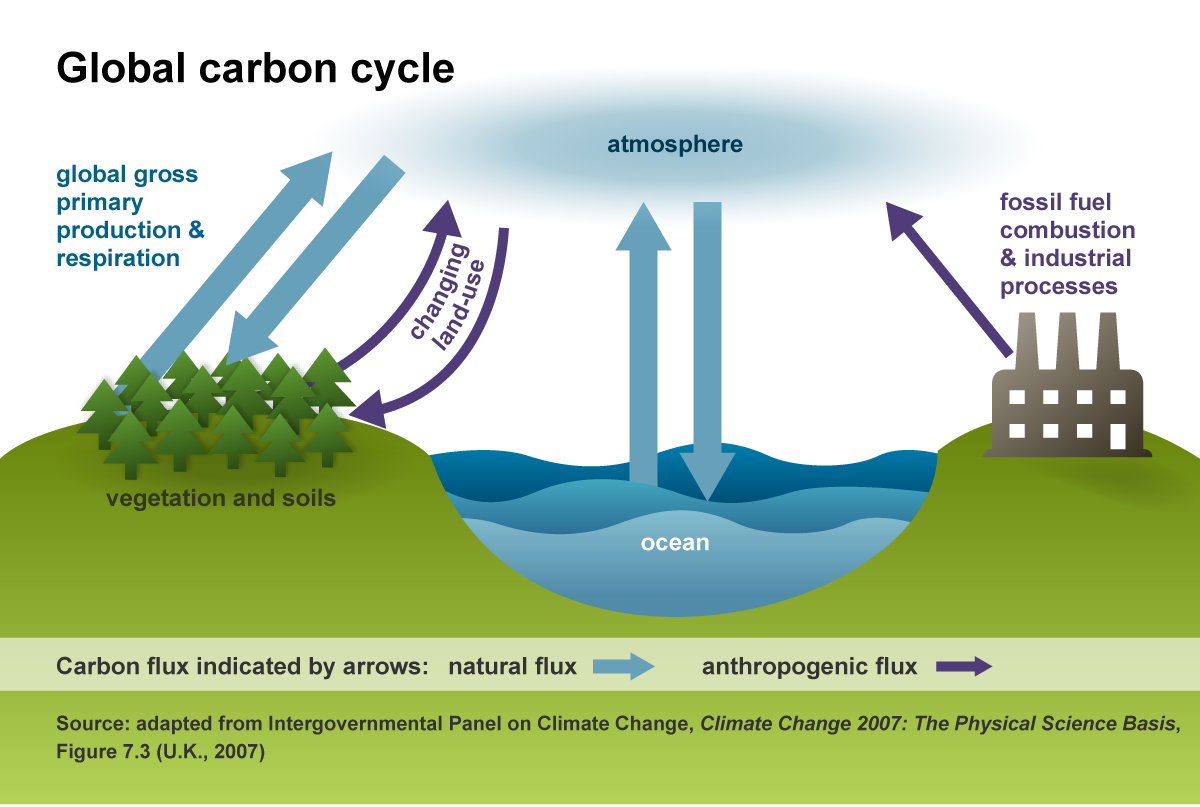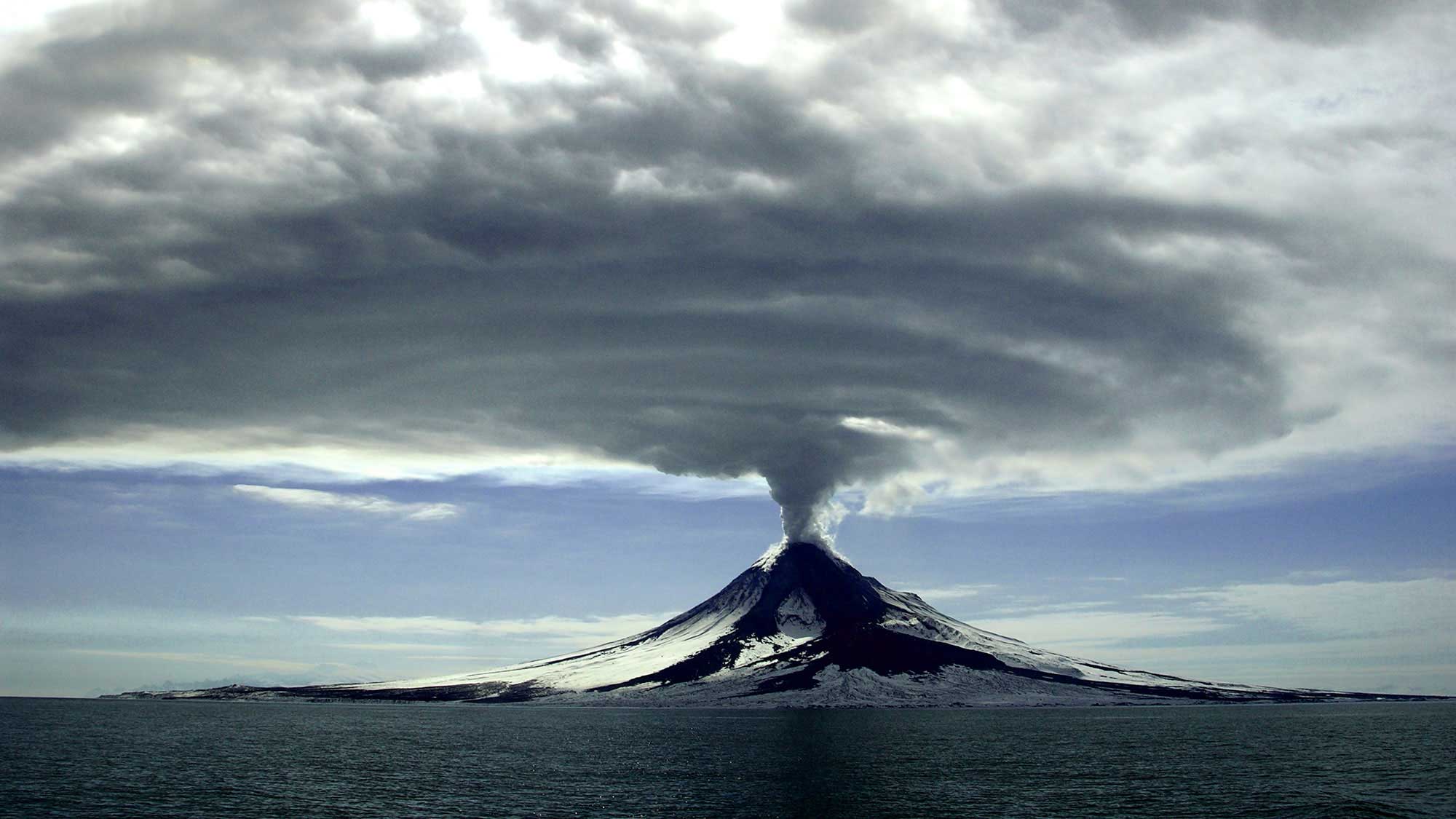Chapter Contents:
- Climate is a System
- Measuring Climate
- Greenhouse Gases and Global Temperature
- Natural Causes of Climate Change
- Summary and Additional Resources
Page Topics: Overview, How Systems Work, Earth’s Climate System (Atmosphere, Hydrosphere, Geosphere, Biosphere), and Regional Weather and Climate Systems.
Image above: The four components of Earth’s climate system: the atmosphere, geosphere, biosphere, and hydrosphere. Image created by Jonathan R. Hendricks for PRI’s Earth@Home project (CC BY-NC-SA 4.0 license).
Overview
One can describe climate as a symphony of weather, taking into account the entire range of weather conditions in a region, the extremes as well as the average.* Climatologists technically define climates through the calculation of “climate normals”: thirty-year averages of variables such as daily temperature, rainfall, snowfall, and frost and freeze dates that can be compared with thirty-year averages of these variables from other time periods (learn more about climate normals here). Fluctuations in these variables that last hours, days, or up to two weeks are called weather.
Weather is what we all feel when we step outside: if you want to know what today’s weather is, just go outside! No one ever actually experiences the climate in the present, because no one can ever step outside and feel that day’s climate. One practical way to think about the difference between climate and weather is that knowing the weather tells you what clothing to wear on a given day, whereas knowing the climate tells you what clothing you need to own.
Life is possible on Earth because the climate is favorable for it to flourish. In particular, the average range of surface temperatures on Earth allows for abundant liquid water, which is essential for life as we know it. Earth’s average surface temperature has changed over time; for example, average global temperature may have been as much as 11°C (20°F) higher than today during parts of the Mesozoic Era, the time of the dinosaurs. But for most of Earth history it has fluctuated within a range that allows for liquid water in the oceans and in land water bodies. Temperature on our planet is controlled, in part, by the fact that we have a thin atmosphere of gases surrounding us; this thin layer acts to hold in some of the energy that the Earth radiates after being warmed by sunlight.
Our two closest neighbor planets, Mars and Venus, have very different atmospheres from Earth, and hence, very different surface temperatures. Venus is similar to the Earth but is closer to the sun, and the additional heat has caused what we call a “runaway greenhouse effect” in which increased temperatures increased the levels of greenhouse gases (learn more here), which further increased the temperature, which further increased greenhouse gases, and so on. The end result is that the temperatures on Venus now can exceed 450° C (842° F) and the atmosphere is nearly 100 times denser than the Earth’s atmosphere. The atmosphere surrounding Venus is 96% carbon dioxide (CO2). Mars, farther than Earth from the sun, has an atmosphere similar to Venus, with 95% CO2, but the total atmosphere is much less dense than that on Earth, about 50 times less dense than the air at the top of Mount Everest. With such a thin “blanket,” little total heat is trapped, thus the average surface temperature on Mars is -53°C (-63°F). The relationship between Venus, Earth, and Mars is an example of what has been called the Goldilocks Principle—the temperature on Earth is not too hot and not too cold, but “just right” for life to exist.





